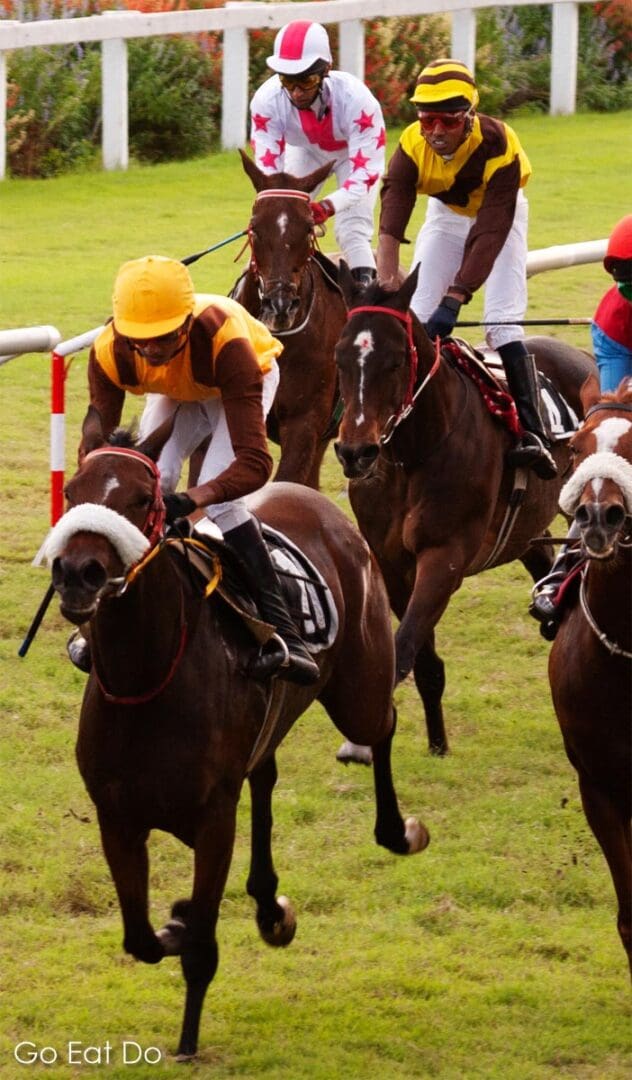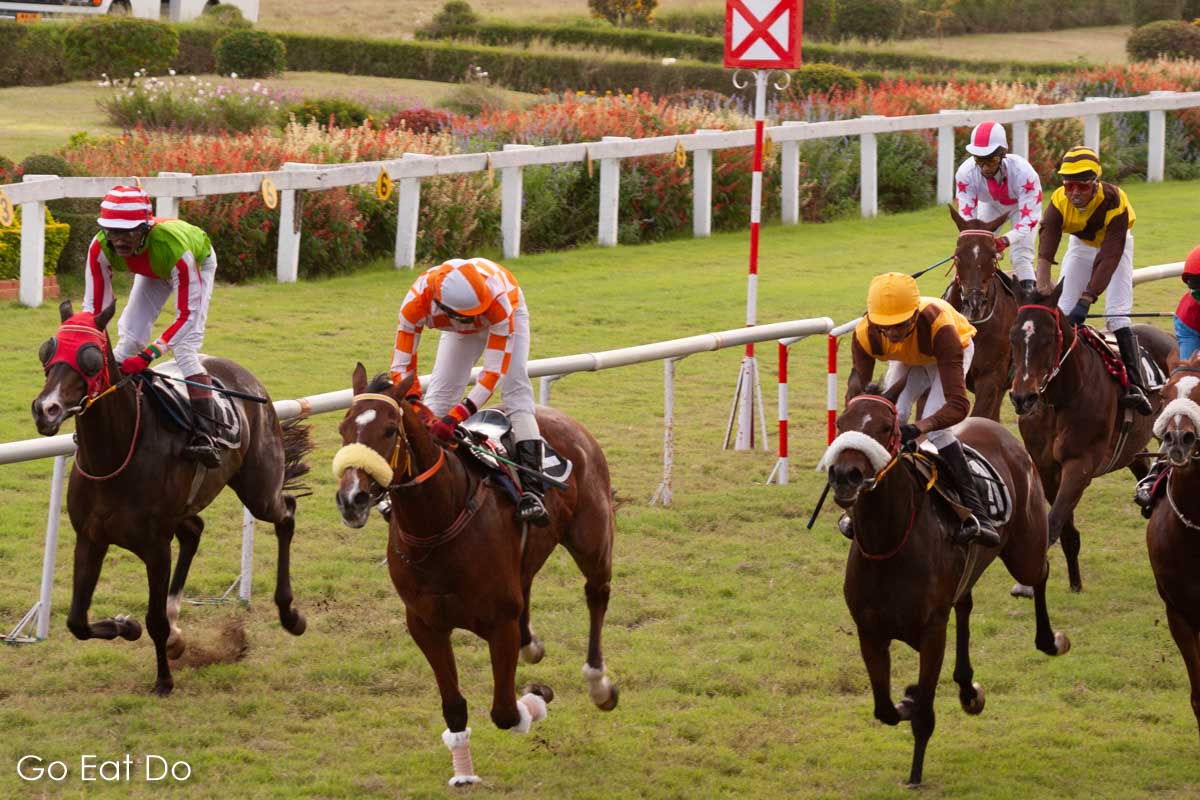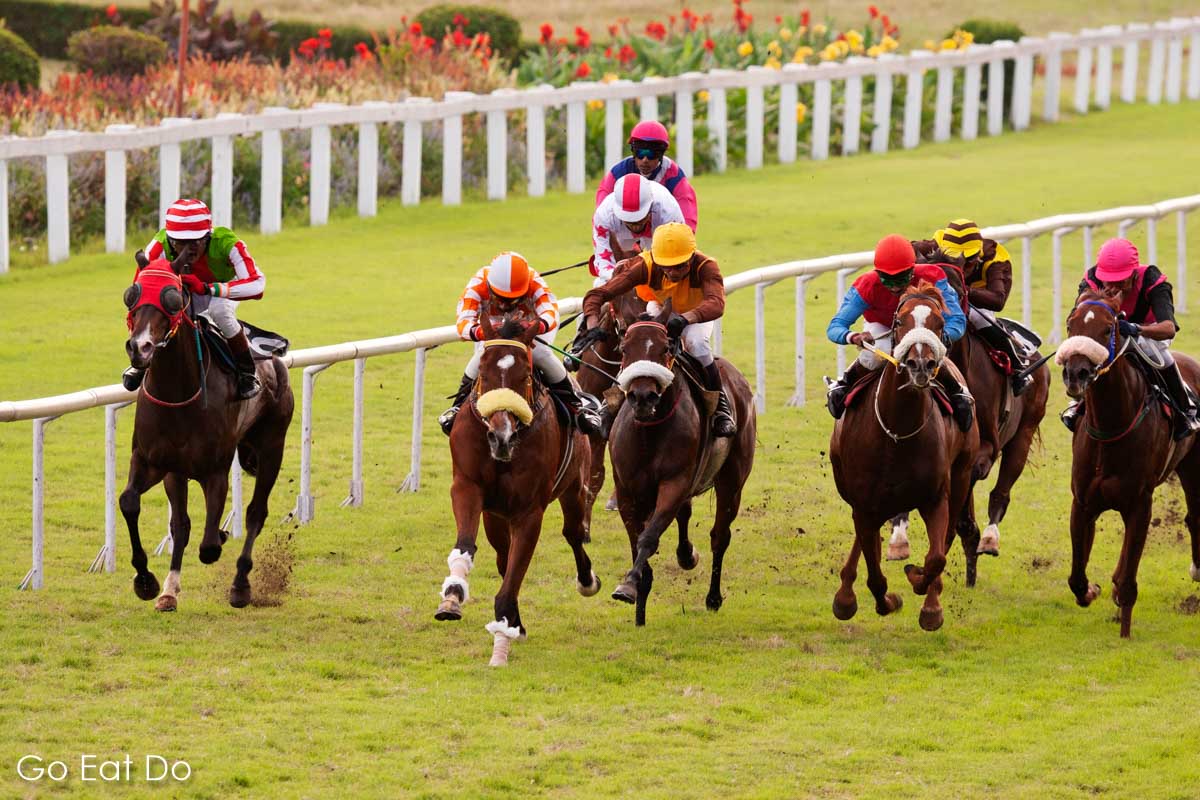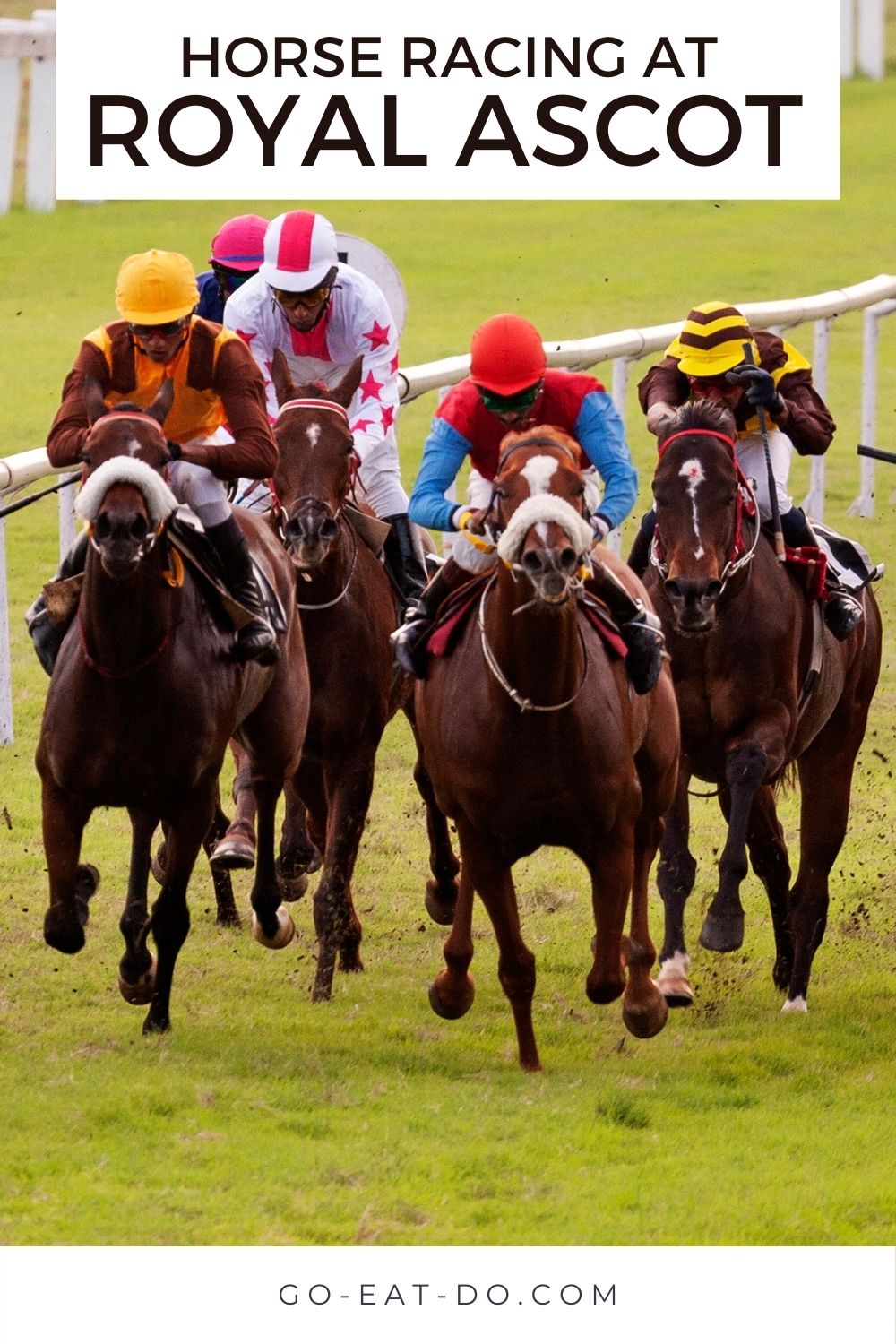Stuart Forster looks at the heritage of horse racing at Royal Ascot, the race meeting held at Ascot Racecourse near Windsor.
Some of the links and banners below are affiliate links, meaning, at no additional cost to you, I will earn a commission if you click through and make a purchase.
Mention Ascot and images of gentlemen wearing top hats and elegantly dressed ladies are conjured into most people’s heads.
The small Berkshire town lies 30 miles west of central London. It’s just a short hop from Heathrow. Ascot is synonymous with scenes from the annual Royal Ascot race meeting, held for five days each June.
In 1813 land was enclosed by an Act of Parliament to ensure it would be fit for racing.
It’s more than just horse racing. Royal Ascot is a key event in the British social calendar. Queen Elizabeth II has attended each of the meetings held since she ascended the throne in 1952.
The arrival of the royal family at the racetrack has become a much-anticipated tradition. Each morning they are driven to the Royal Enclosure in an open-topped, horse-drawn carriage and the royal standard is raised to mark their presence.
Horse racing at Royal Ascot
Ascot is adjacent to Windsor Great Park. It’s actually leased from the Crown Estate.
It’s said the idea to hold a race meeting here came from Queen Anne. Anne reigned from 1702 to 1707 and spotted the area’s potential while out riding. It was then heathland known as East Cote.
The heath was cleared and the first race meeting was held in 1711. Seven sturdy English Hunters, all aged six years or older, competed for Her Majesty’s Plate over a distance of four miles. The name of the first winner is lost to time.
The meeting is now the richest in the British racing calendar. Thoroughbreds are drawn from around the world.
The prize fund for Royal Ascot’s 2019 Prince of Wales Stakes was £750,000 while the Diamond Jubilee Stakes was £600,000. The Queen Anne Stakes is also one of the meeting’s high-profile races. The Gold Cup is a race with traditions dating to 1807.

Royal winners at Ascot
In 2013 jockey Ryan Moore rode home Estimate, a filly, to win the Gold Cup wearing the Queen’s colours.
Her Majesty Queen Elizabeth II was visibly overjoyed by the 22nd Royal Ascot win of her reign. It was 60 years on from her first winner, when Choir Boy romped home in the 1953 Royal Hunt Cup. Prince Andrew, the Duke of York, duly presented his mother with the winner’s trophy.
Racing fans associate the meeting with some of the sport’s great names. Those that stand out include Frankel, the horse which retired unbeaten, and Sir Henry Cecil, the man who trained a record 75 Royal Ascot winners.
Entering the Royal Enclosure
For many people attending Royal Ascot is primarily a grand social occasion.
Entry to the Royal Enclosure is by invitation only. The formal dress code within the Royal Enclosure is enforced by distinctively dressed stewards, renowned for their bowler hats.

The Royal Ascot Dress Code
Fashion commentators have a field day talking about the clothing and hats worn by female attendees. Royal Ascot dresses for ladies are strictly regulated. It’s not permitted for ladies to bare their midriffs or to don strapless dresses.
Gentlemen have a choice between grey or black morning suits with waistcoats and black shoes. If gentlemen wish to enter the Royal Enclosure they are not permitted to wear a coloured band or ribbon on their top hats.
Military dress uniforms are permitted.
Overseas visitors are welcome to attend Royal Ascot in their national costume.
The logistics of Royal Ascot
There’s an aspect of exclusivity to Royal Ascot. Yet it’s a highly popular event.
280,268 people were present over the five days in 2012, making it Britain’s best attended race meeting. 301,818 attended Royal Ascot in 2018.
A glance at the logistics of Royal Ascot reveals more about its scale. More than 6,000 members of staff are typically employed during the race meeting. That includes 2,400 cleaners to help recycle 547 tonnes of waste.
More than 100 bars and food outlets typically open during Royal Ascot. It requires 39 kitchens and 330 chefs to produce the dishes consumed onsite.
The race meeting’s Champagne and canapé receptions are much celebrated. 2,050 kilograms (4,519 pounds) of lobster were consumed in 2012. So too were 51,549 bottles of Champagne, 173,776 pints of beer and 44,524 glasses of Pimms.
As you’d expect for a sporting event of such standing, dishes by some of Britain’s top chefs were cooked during the meeting. Michael Caines and Phil Howard count among the highly regarded chefs who have prepared food at Royal Ascot.

Ladies Day at Royal Ascot
As many eyes focus on the attire of female attendees they do on the track during Royal Ascot’s Thursday.
It’s known to the public by the informal term Ladies’ Day. Use of that term grew in popularity from 1823 when an anonymous poet penned a poem with the line, ‘Ladies Day, when women, like angels, look sweetly divine.’
As Royal Ascot approaches there’s almost as much anticipation about dresses and hats as the meeting’s winners.
Books about Ascot
Planning on attending a race meeting at Ascot or interested in horse racing? You may find these books of interest:
Find out more about the famous race meeting in the book Ascot: The History:

George James Cawthorne is the author of Royal Ascot: Its History and Its Associations:

John Curtis and Nigel Tallis are the authors of The Horse: From Arabia to Royal Ascot:

James Sherwood is the author of Fashion at Royal Ascot: Three Centuries of Thoroughbred Style:

Map showing Ascot Racecourse
The Google Map below shows the location of Ascot Racecourse:
Hotels near Ascot Racecourse
Looking for Ascot hotels? You can find accommodation in Ascot and the surrounding area via Booking.com:
Further information
Find out more about the Royal Ascot race meeting, including how to acquire tickets, on the Ascot website.
Learn more about nearby attractions on the Visit England website.
Stuart Forster is a travel journalist based in North East England. Stuart is available for editorial and commercial commissions.
The images of the horse racing are purely illustrative and were not photographed at Ascot.
Thank you for visiting Go Eat Do and reading this post about horse racing at Royal Ascot. You may also enjoy this look at the heritage of the Grand National.
Like the Go Eat Do Facebook page to see more photos and content
If you enjoyed this post why not sign up for the free Go Eat Do newsletter? It’s a hassle-free way of getting links to posts on a monthly basis.
A version of this post was first published on Go Eat Do on 10 June 2015.



